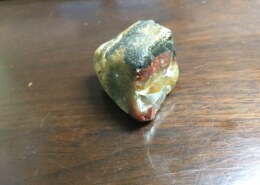The physical and engineering properties of rock can vary widely depending on factors such as composition, structure, porosity, and moisture content. Some key properties include: 1. **Density**: The mass per unit volume of the rock. It's typically measured in grams per cubic centimeter (g/cm³) or kilRead more
The physical and engineering properties of rock can vary widely depending on factors such as composition, structure, porosity, and moisture content. Some key properties include:
1. **Density**: The mass per unit volume of the rock. It’s typically measured in grams per cubic centimeter (g/cm³) or kilograms per cubic meter (kg/m³).
2. **Porosity**: The percentage of void spaces (pores) within the rock. It affects the rock’s ability to hold fluids and can influence its strength and durability.
3. **Permeability**: The ability of fluids to flow through the rock. It depends on factors such as pore size, connectivity, and fluid viscosity.
4. **Compressive Strength**: The ability of the rock to withstand axial loads without failure. It’s typically measured in units of pressure, such as megapascals (MPa) or pounds per square inch (psi).
5. **Tensile Strength**: The ability of the rock to withstand tension forces without breaking. It’s usually lower than compressive strength and varies greatly depending on the type of rock.
6. **Shear Strength**: The resistance of the rock to sliding along internal planes. It’s important in engineering for stability analysis of slopes and foundations.
7. **Weathering Resistance**: The rock’s ability to withstand weathering processes such as freeze-thaw cycles, chemical dissolution, and abrasion.
8. **Abrasion Resistance**: The resistance of the rock to wearing away due to frictional forces.
9. **Elasticity**: The ability of the rock to deform reversibly under stress and return to its original shape when the stress is removed.
10. **Anisotropy**: Some rocks exhibit different properties depending on the direction of measurement due to their layered or foliated structure.
Understanding these properties is crucial in various fields such as civil engineering, geology, mining, and construction, as they dictate the suitability of the rock for specific applications and the methods needed for excavation, reinforcement, and support.
See less
Water gaps are formed through the erosive action of rivers carving through resistant rock formations over millions of years. They occur when a river cuts through a ridge or mountain range, creating a gap or passageway. While water gaps can be large and impressive, they are not necessarily evidence fRead more
Water gaps are formed through the erosive action of rivers carving through resistant rock formations over millions of years. They occur when a river cuts through a ridge or mountain range, creating a gap or passageway. While water gaps can be large and impressive, they are not necessarily evidence for a catastrophic flood. Instead, they are typically formed through the slow and steady process of erosion by flowing water over geologic time scales. However, some creationists have interpreted water gaps as evidence for a catastrophic flood, although this interpretation is not supported by mainstream geological science.
See less